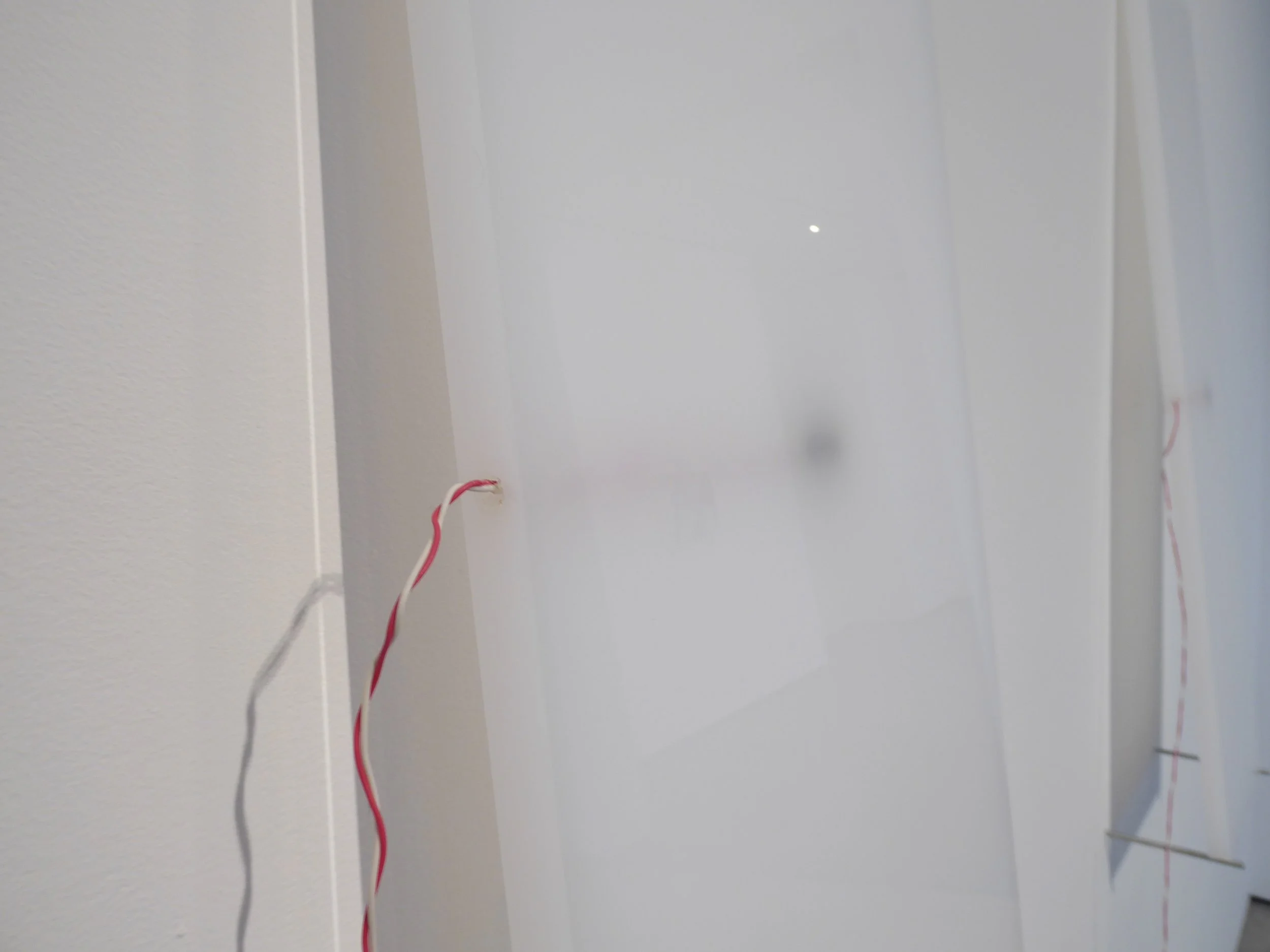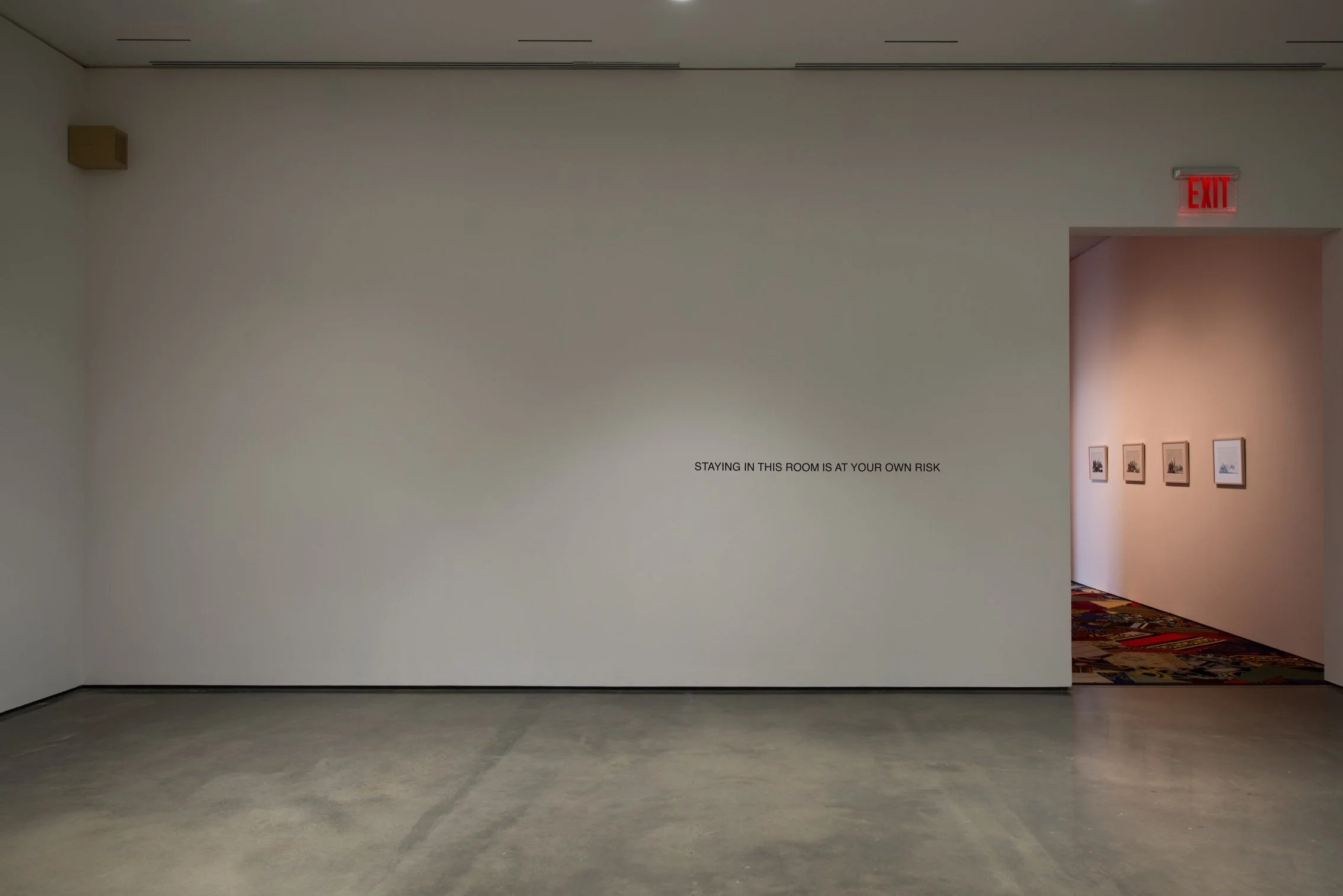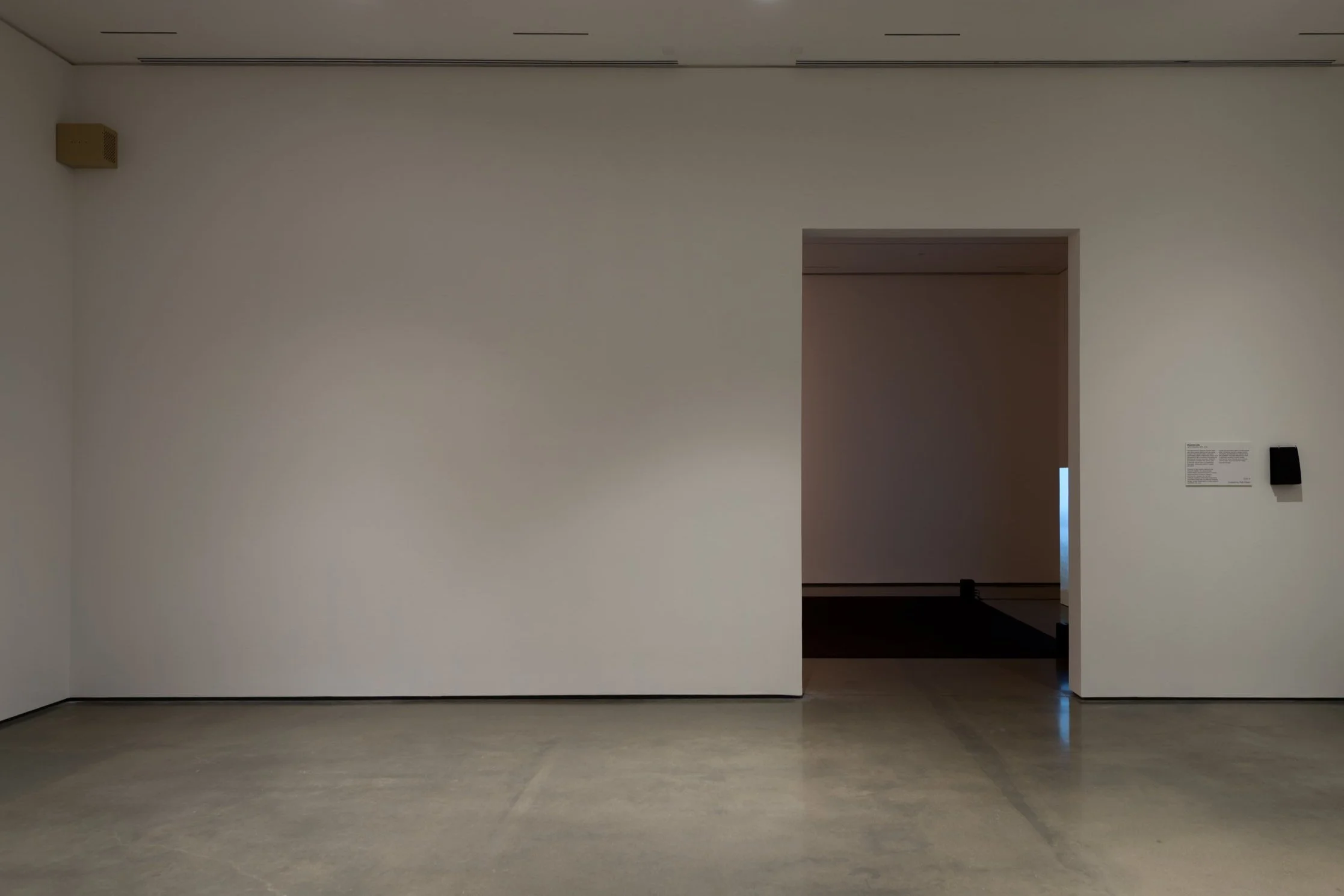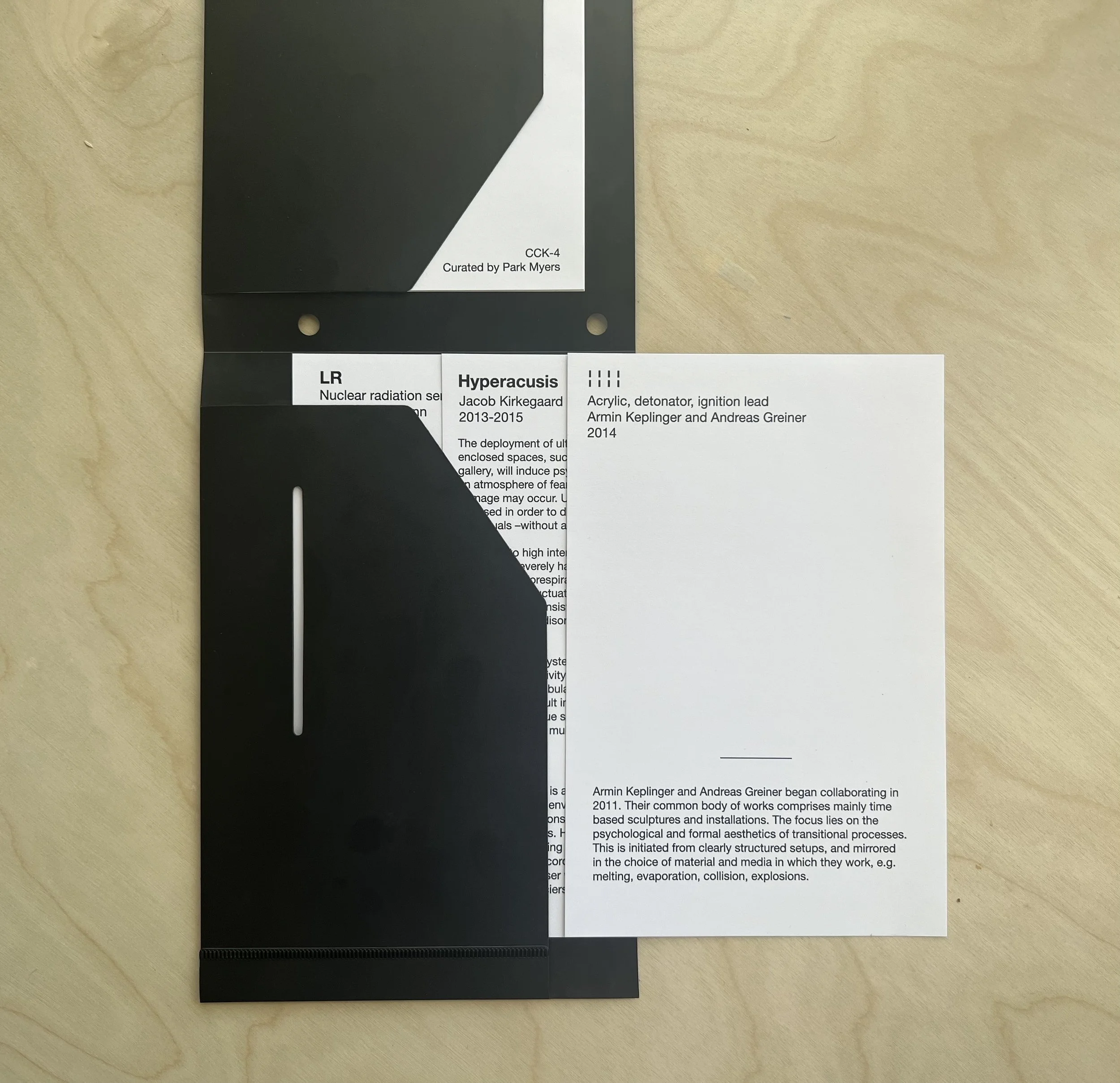TITLE: CCK-4
ARTIST: Andreas Greiner + Armin Keplinger, Markus Hoffman, and Jacob Kirkegaard
LOCATION: Hessel Museum of Art, Annandale-on-Hudson, NY
DATE: 03.29.2015 - 5.29.2015
Do you feel faint?
Are you fearful?
Do you have heart palpitations?
Do you have rapid or difficult breathing?
Do you feel dizzy or light headed?
Do you feel confused?
Is it difficult to concentrate?
Is it difficult for you to speak?
Do you feel nauseous?
Do you feel shakiness, trembling?
Do you have a sense of unreality?
Do you feel detached from your body?
Is it difficult for you to perform your task?
Do you feel you might die?
In clinical studies of panic and anxiety, CCK-4 is an anxiogenic administered to induce momentary severe anxiety and panic in patients and test subjects. A common characteristic of extreme anxiety is the catastrophic misinterpretation of a given event. The momentary experience of time is pushed to extremes of speed and slowness, and spatial dimension and magnitude become difficult to comprehend. In this instance subjects become acutely aware of not only their own body and mind but also the environment in which they are embedded.
CCK-4 presents a set of contexts with the work of Andreas Greiner + Armin Keplinger, Markus Hoffman, and Jacob Kirkegaard in which the visitor’s attention is directed towards the psychological and physiological processes that form the subjective perception of a given space and time. Works in the exhibition explore the inherent elasticity of human perception by heightening the viewer’s awareness of external spatial and temporal aspects of the exhibition and institution, and attunes us to the internal perceptive processes that organize our sense of time and space. In the exhibition’s entirety, CCK-4 curatorially considers how emotion, mental states, and sensorial stimulus form the complex ensemble of one’s extended experience of the present moment.
In the Event of an Emergency
“There are bodily threads managing the mind’s activity. Psychosomatic ties are built according to the principle of nonlinear circular causality. The body and the mind, the brain and the consciousness are in relations of circular, mutual determination.” – Helena Knyazevav
This determination of the subject and the environment, their situdatedness, is a complex system of co-production of an experience—between the situated, enactive cognitive body and its surroundings. Situation is not arbitrary, but is uncertain. One may find themself in a situation, and upon their arrival is already in the process of both cognitively assessing the surroundings as well as determining future action. This is the perception-action feedback loop of a self-organizing system. This self-organizing system, be it biological, ecological, or societal is in a continual flux of adaptation: reconfiguring actions in an attempt to maintain order in a system that has a natural tendency to disorder. Stasis and equilibrium are constantly in a state of maintenance in a far-from-equilibrium surrounding—an ongoing event in relation to emergence.
An exhibition is an event of emergence.
The awareness of the embodied cognitive mind involves one’s conscious and subconscious evaluation of, not only their current perception of the time and space in which they are embedded, but also the sensory-perceptive processes that form this awareness. Internal (physiological and psychological) as well as external (physical and societal) milieus are all potential modulators of one’s experience of time and space. Adaptivity arises from the emergence of uncertain events. The human mind, accepted as an embodied agent in the world, has the ability to adapt to the chaos of their surrounds. The perception of space and time becomes evidently elastic in the momentary experience of the unpredictable, uncertain aspects of a given situation. Productivity, learning and awareness of the self-organized system happen at the edge of chaos. In this event of perceived emergency the embodied agent becomes acutely aware of one’s relation to the space and time of interaction between themself, their surroundings, and potential action.
Preparedness for catastrophe is inherent to the plasticity of the brain and the homeodynamics of the body—in a systemic, inferential feedback loop. In a cultural atmosphere that capitalizes on our fight or flight function through real and artificial articulations, the museum has subsumed a different modus operandi. This is one of ambiguity and ambivalence to an embodied participant - under the guise of autonomy or a disregard for the situational experience. In this spatiotemporal suspension an exhibition may communicate safety and stasis by establishing an atmosphere that comforts the passive disembodied visitor. Alternatively, uncontrollability and indeterminacy are the very aspects of the cognitive process that excite, instill anxious apprehension, and pleasure in their recognition of these feelings. When self-reflexive embodied engagement is necessary to the exhibition, it is also a situation of potentially radical experiences of space and time.





